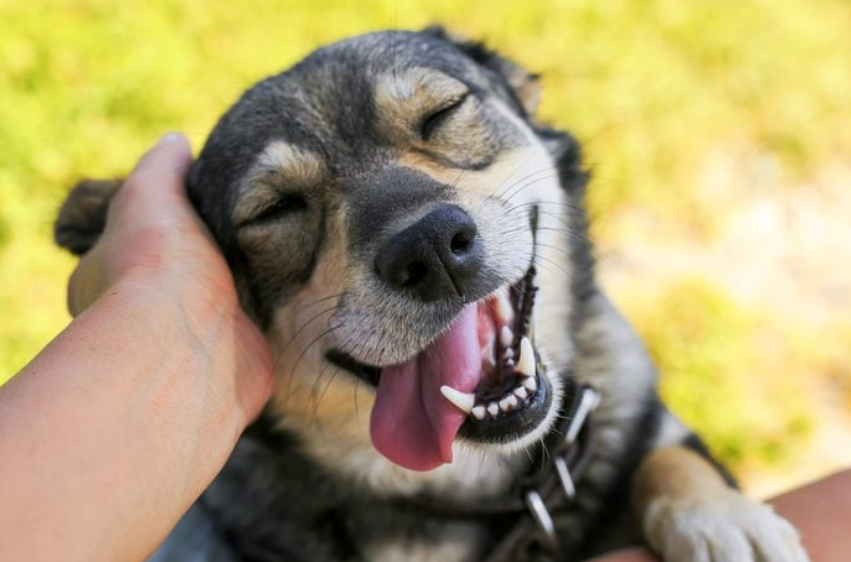Dogs communicate with us in a variety of ways, from their body language to the sounds they make. Understanding how your dog expresses emotions such as happiness, stress, or anxiety can strengthen your bond and help you provide better care. In this article, we’ll explore the different ways dogs communicate and what their behaviors mean.
Understanding Canine Body Language
A dog’s body language can tell you a lot about how they’re feeling. By observing their posture, tail movement, ear position, and facial expressions, you can get a better idea of their emotional state.
-
Tail Wagging – While many believe a wagging tail always indicates happiness, it can also signify excitement, nervousness, or even aggression. A slow wag with a relaxed body often signals contentment, while a stiff, rapid wag may mean the dog is on high alert.
-
Ears Positioning – Ears that are perked up suggest alertness and curiosity, while flattened ears may indicate fear or submission.
-
Eye Contact – Soft, relaxed eyes usually mean a dog is comfortable, whereas hard staring can be a sign of dominance or threat. Squinting or avoiding eye contact may indicate stress or submission.
-
Body Posture – A relaxed stance typically means a dog is at ease. A dog cowering or tucking its tail might be scared, whereas a stiff, rigid posture could indicate aggression or dominance.
-
Mouth & Facial Expressions – A relaxed, slightly open mouth often suggests contentment, while a curled lip, bared teeth, or excessive panting could indicate discomfort or stress.
Decoding Barking and Other Vocalizations
Dogs bark, whine, growl, and howl for various reasons. Understanding what these vocalizations mean can help you respond appropriately.
-
Barking – Dogs bark to alert, greet, demand attention, or express excitement. Continuous barking may indicate boredom, while a sharp, single bark is often a warning.
-
Whining – Often a sign of anxiety, submission, or a desire for attention. If a dog is whining excessively, it may be experiencing distress.
-
Growling – Growling isn’t always a sign of aggression; sometimes, dogs growl during play. However, low, deep growls often indicate discomfort or a warning.
-
Howling – Typically a form of long-distance communication, howling may be a response to sirens, loneliness, or instinctual behavior.
Recognizing Signs of Stress and Anxiety
Dogs can experience stress just like humans. Recognizing the signs of anxiety can help you provide comfort and reassurance.
-
Yawning & Lip Licking – When not related to sleep or eating, these behaviors often indicate nervousness or stress.
-
Pacing & Restlessness – A dog that is pacing back and forth may be feeling anxious or unsettled.
-
Tucked Tail & Lowered Body – A tucked tail or lowered posture is a clear sign of fear or submission.
-
Excessive Panting – If a dog is panting heavily without physical exertion, it could be a sign of stress or overheating.
-
Avoidance or Hiding – A stressed dog may try to avoid people or situations that make them uncomfortable.
Signs of a Happy Dog
Recognizing when your dog is truly happy can help ensure they live a fulfilling and joyful life.
-
Relaxed Body Language – A loose, wagging tail, normal ear position, and a relaxed stance indicate happiness.
-
Playfulness – A playful bow (front legs down, back end up) means your dog is in a good mood and ready to interact.
-
Healthy Appetite & Sleeping Habits – A content dog will have a steady appetite and normal sleep patterns.
-
Excited Greetings – A wagging tail, happy barks, and joyful jumping when they see you indicate enthusiasm and attachment.
-
Seeking Attention & Affection – A happy dog will enjoy petting, cuddles, and spending time with their human.
Final Thoughts
Understanding your dog’s behavior and communication signals can help you build a stronger relationship and ensure their well-being. By paying attention to their body language, vocalizations, and overall demeanor, you can better meet their emotional needs and create a happier, healthier environment for your furry companion. Have you noticed any unique ways your dog communicates with you? Share your experiences in the comments below!



